PLOT: Following a month spent closely with Count Dracula, vampire hunter Jonathan Harker details his horrifying time to Sister Agatha Van Helsing while he recovers in a convent. When Dracula comes to, he finds himself in the 21st century.
REVIEW: Given the folkloric breadth of the dashing and slashing Count Dracula, a character that dates back to the dawn of cinema, appearing in well over 100 movies in the past millennium, one can imagine how difficult it might be to breathe new life into its dramaturgical villainy. So when you pair this dilemma with Netflix Originals’ chief cross to bear: pushing quantity over quality, we’re left with DRACULA (currently streaming), a three-parted, 270-minute miniseries that starts off with great promise, draws us in with garish period-detail and sumptuous production design, but in the end fails to frighten with weak, staid and overproduced jump-scare tactics, and in terms of dramatic storytelling, devolves into a disengaging melodrama devoid of all Dracula’s inherent charms. The quality of each chapter decreases in chronological order, ultimately transporting the miscast Danish actor Claes Bang into the 21st century, where, as the cunning Count, he risibly learns how to Skype and text message. The bottom line for Dracula is one that pertains to Netflix Originals as a whole: we expect better from these two brand names!
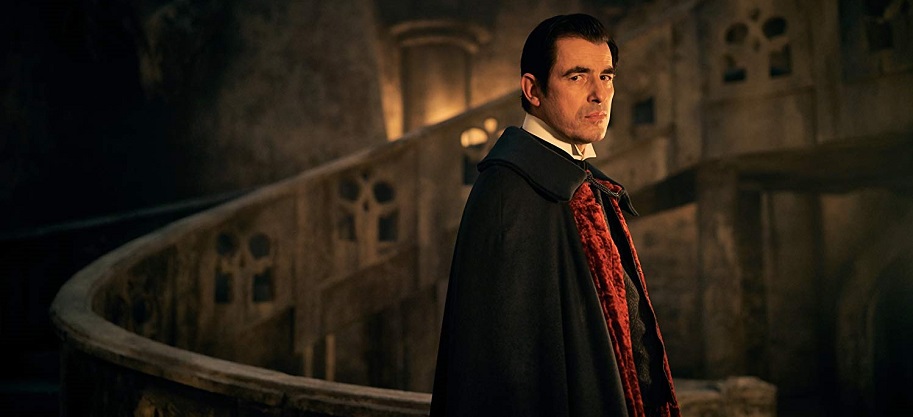
Part one, the best of the bunch, harkens back to Hungary in 1897. We’re immediately drawn in by elegant production design and immersive set decoration adorned with rutilant orange firelight, deer-antler chandeliers, shadowy corridors with fluttering flies and bats, etc. We meet Sister Agatha Van Helsing (Dolly Wells), who has welcomed the sickly Jonathan Harker (John Heffernan) into her convent, but not without a cost. She demands he relay his time in the company of Count Dracula, a rough six-week span during which Harker gets to know all about the mythos of the count’s wicked ways. Old and decrepit, Dracula feasts on Harker’s blood daily until he grows younger and stronger, while Harker falls ill. Dracula uses Harker’s love, Mina (Morfydd Clark), as leverage to do whatever he pleases. As we cut back and forth between Harker’s interview with Agatha and his time in Dracula’s moldering castle, the few moments of moderate terror come when Dracula transmutes from the visage of a wolf, as well as when Harker uncovers a passel of desiccated quasi-zombie captives Dracula has been feeding on for centuries.
In the second chapter, Dracula recounts his time traveling to England via the infamous Demeter. Captain Sokolov (Jonathan Aris) presides over the journey, during which Dracula does his best JASON TAKES MANHATTAN impression, savagely slaughtering every person dumb enough to allow themselves to be alone on the ship with the Count. Seriously, Dracula eats more dudes than Andy Dick on a Caribbean cruise! Unfortunately, as the show progresses, it increases its ineffectively stylized stints of violence, which are often punctuated with cheesy slow-motion zooms and excruciatingly shrill sound cues that feel akin to what you’d see on a sedate, major network production. Made in partnership with the BBC by the producers behind Sherlock and Dr. Who (Mark Gatsis, Steven Moffat), Dracula feels made for broad television networks, not unlike what we saw from say, Fox’s Exorcist series. The point is, this is no paid cable outing, a la HBO or Showtime, and it seems meant to be digested by the 14-and-up the crowd. That’s all fine, but unlikely to strike fear in the hearts of most adult horror fans, particularly ones inured to or well versed in Dracula’s rich history.
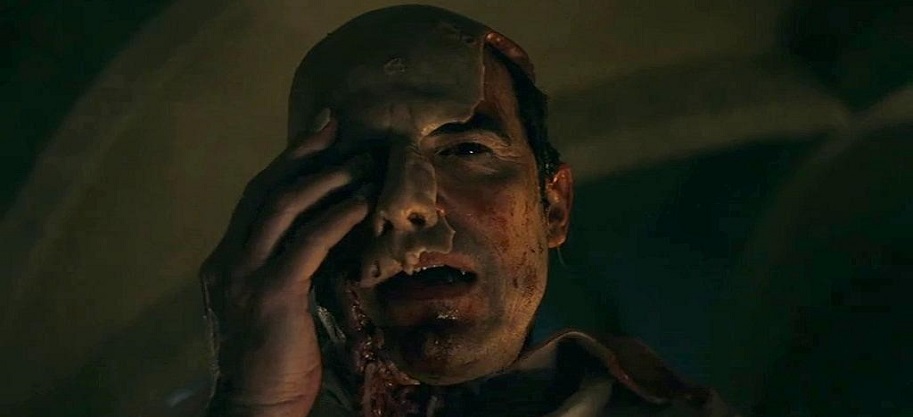
The final chapter, clearly the worst, threatens to undermine all of the goodness of the preceding entries. In a plot contrivance we won’t spoil, Dracula lies dormant for over 120 years until he awakes in the 21st century. Here the series shifts from moody period piece to laughable fish-out-of-water sitcom that almost resembles a parody of WHAT WE DO IN THE SHADOWS, itself already a satirical send-up. Watching Dracula fumble around with smartphones, tablets, Skype and other technological advents conjures far more sneers than fears, and disinvites viewer interest by offering a dramatically discontinuous story-arc that simply does not work. It goes back to the challenge of finding new material for a 100-year old horror villain to explore. Moffat and Gatsis seem to have painted themselves into a corner when conceiving of this new unpaved avenue, leaving the character with little new territory to till. We might excuse the severe drop off from chapter one to three if Dracula himself had the requisite charisma we expect from the rakish and ribald bloodsucker, but alas, this Bang fella ain’t the one!
Indeed, the biggest gripe one might voice about Dracula is the cut-rate miscasting of Claes Bang as the titular terror. While okay in spots, Bang embodies nowhere near the right amount of sophisticated gravitas needed for the role of Dracula. He’s neither suave nor debonair enough, and certainly hasn’t the threatening countenance to balance the seductive charms needed for the character to truly frighten. In the pantheon of A-list Dracula actors – Lugosi, Lee, Chaney – Bang will be forgotten faster than Moffat and Gatsis forgot about Bram Stoker’s source material, which they take several liberties adapting for the worse. This is a shame, as the series starts off with gripping intrigue brought about by the envelopment of a well-built world, only to squander the immersive set decorations and handsome production values by the midway point. By then, we tend to overlook the visual splendor of the project, hone in on the lack of story to warrant 270 minutes, and begin to resent the lame futuristic direction the final episode veers toward.
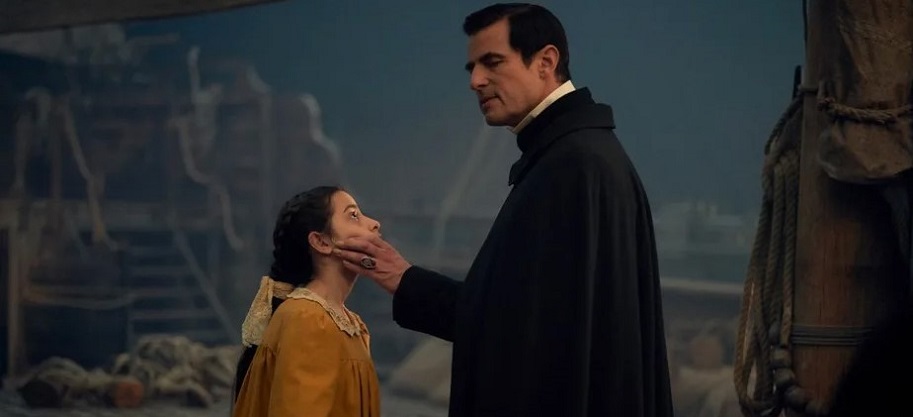
So unless you’re a die-hard DRACULA completist, you won’t find much to write about home past the first episode of Netflix’s new horror original. The potential of the opening frame is quickly sullied by the dearth of genuine thrills in the second and third, the increasingly disengaging story, the weak bouts of violence, and the gross miscasting of Dracula himself. If Netflix wants to earn the luster of its namesake slapped on movies like THE IRISHMAN and MARRIAGE STORY, their original content needs to be a hell of a lot better than this. Of course, Dracula is supposed to suck…blood, not ass!


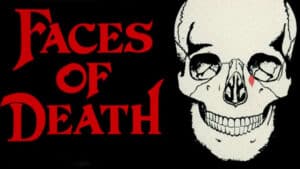


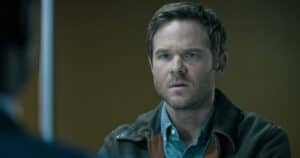
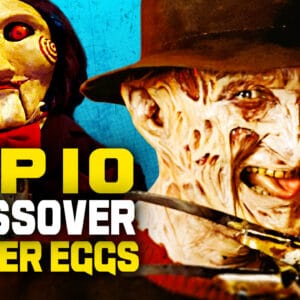
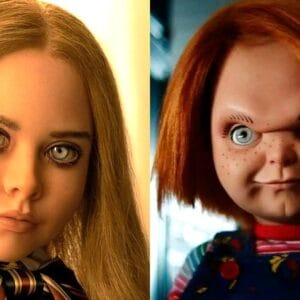

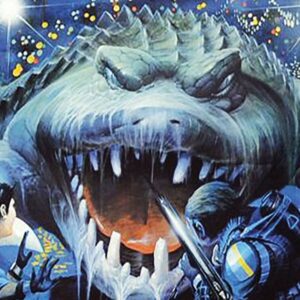
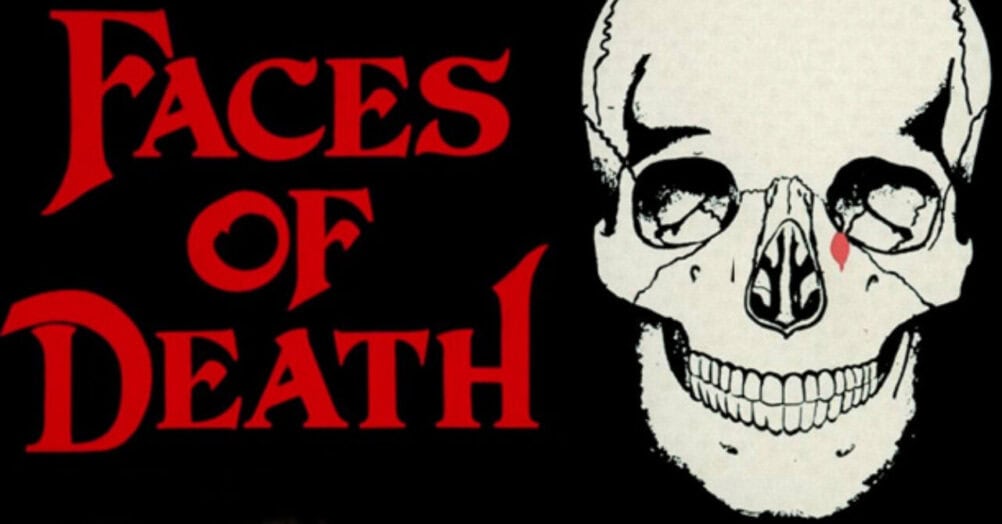
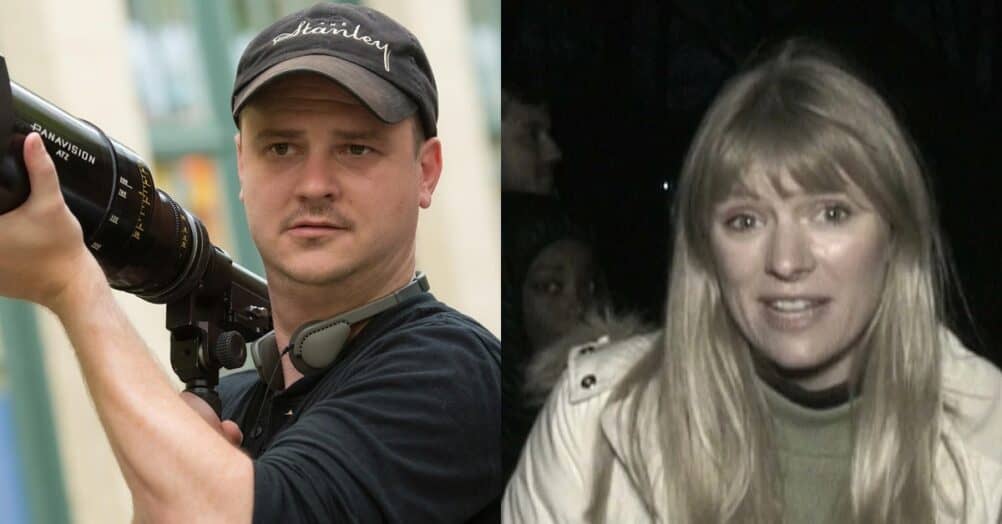
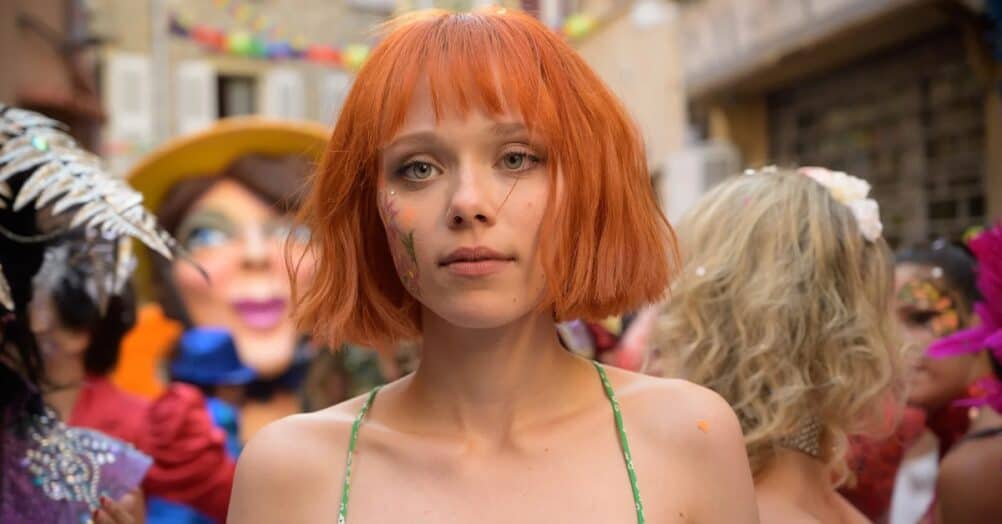
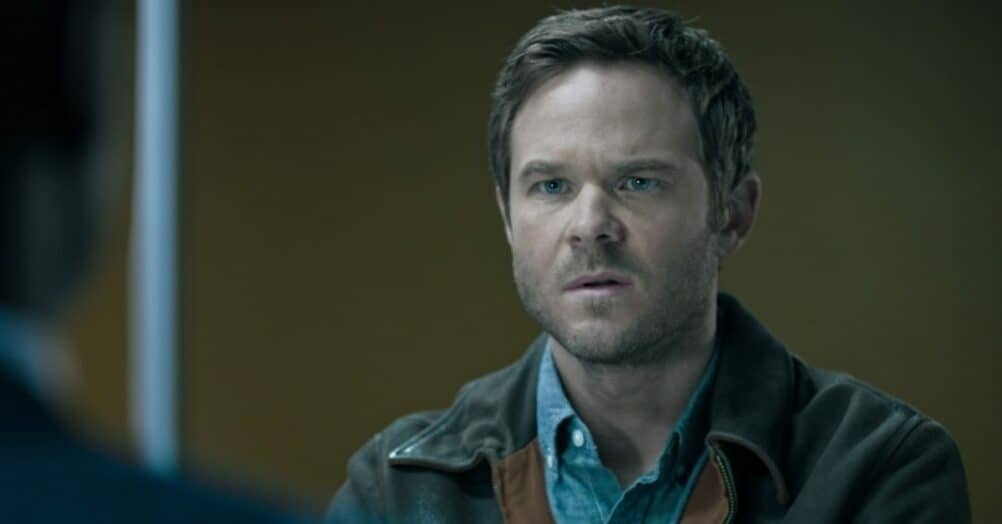

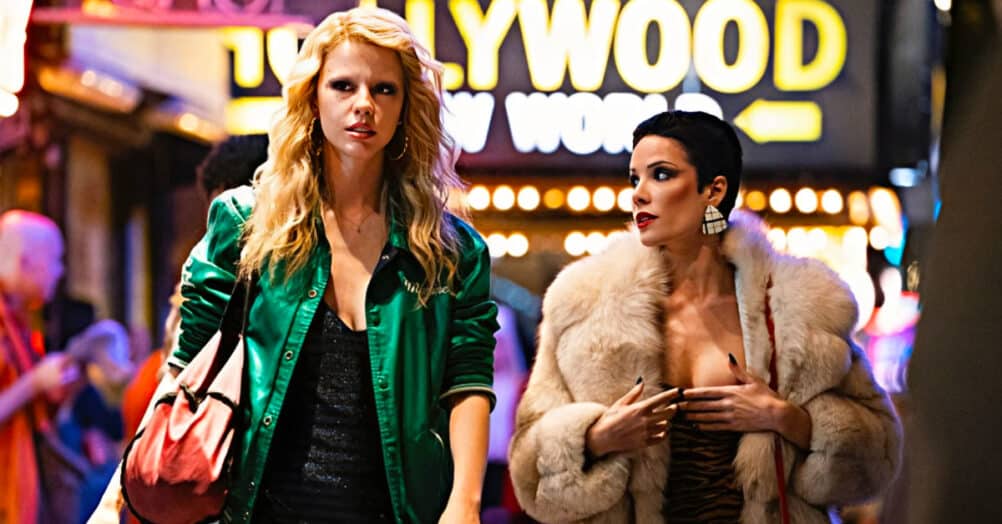
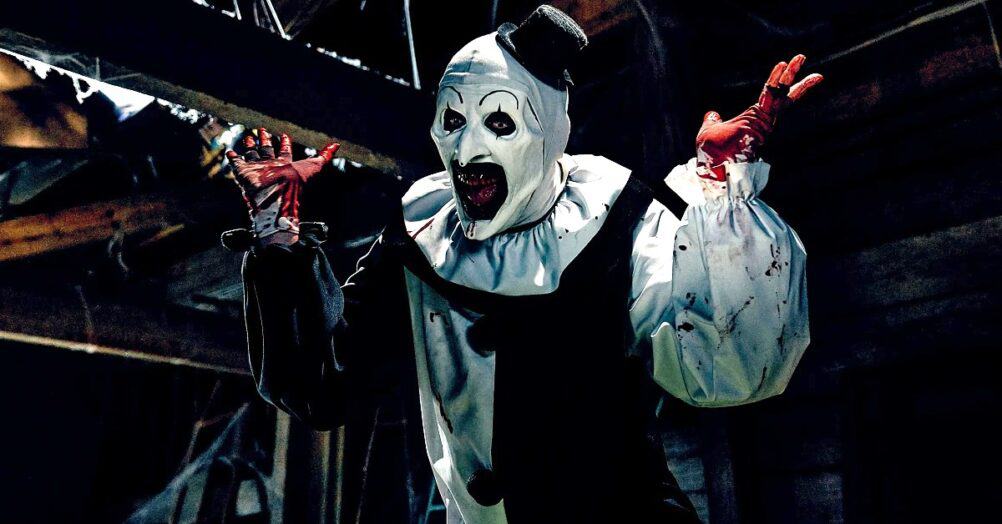
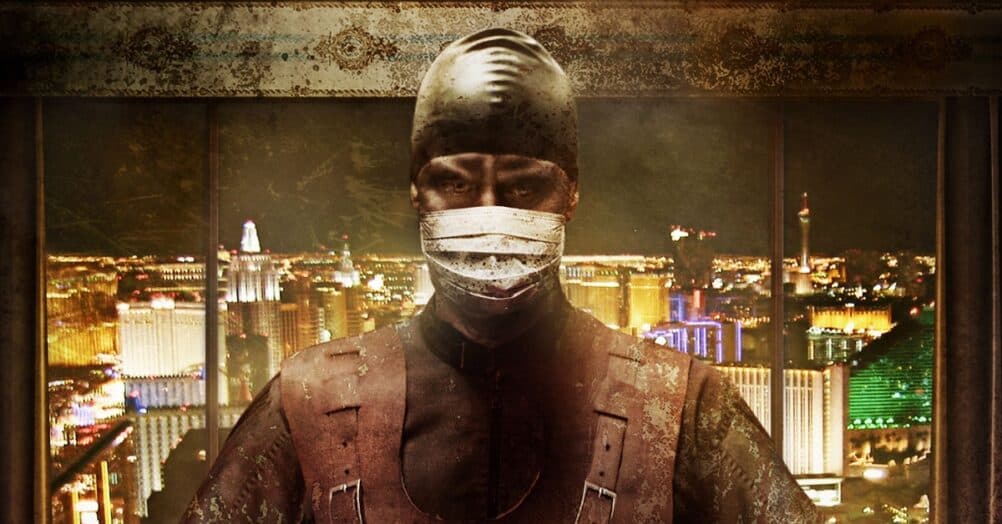
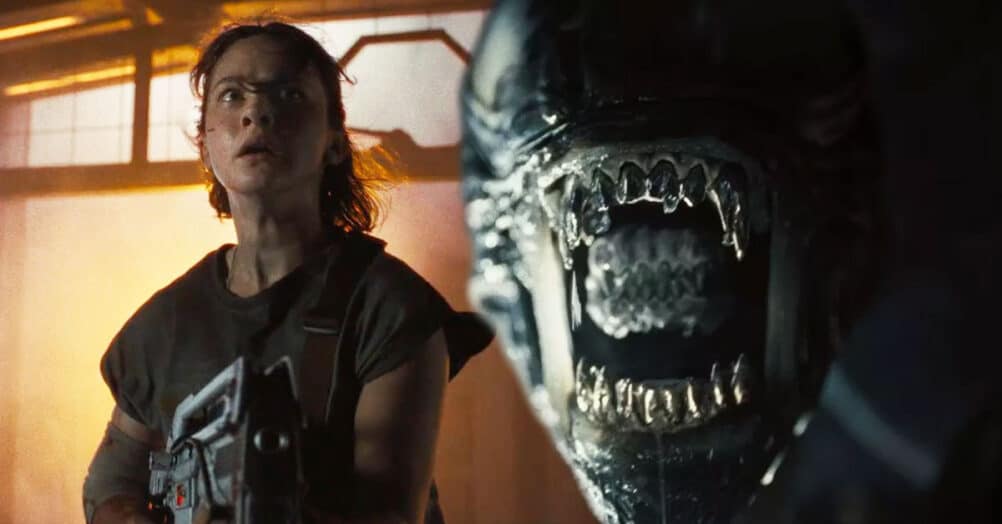
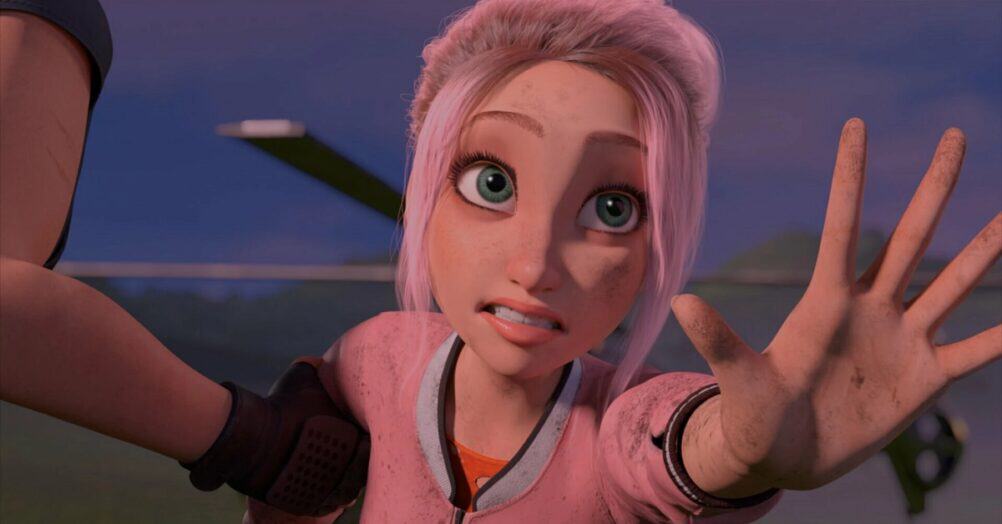
Follow the JOBLO MOVIE NETWORK
Follow us on YOUTUBE
Follow ARROW IN THE HEAD
Follow AITH on YOUTUBE